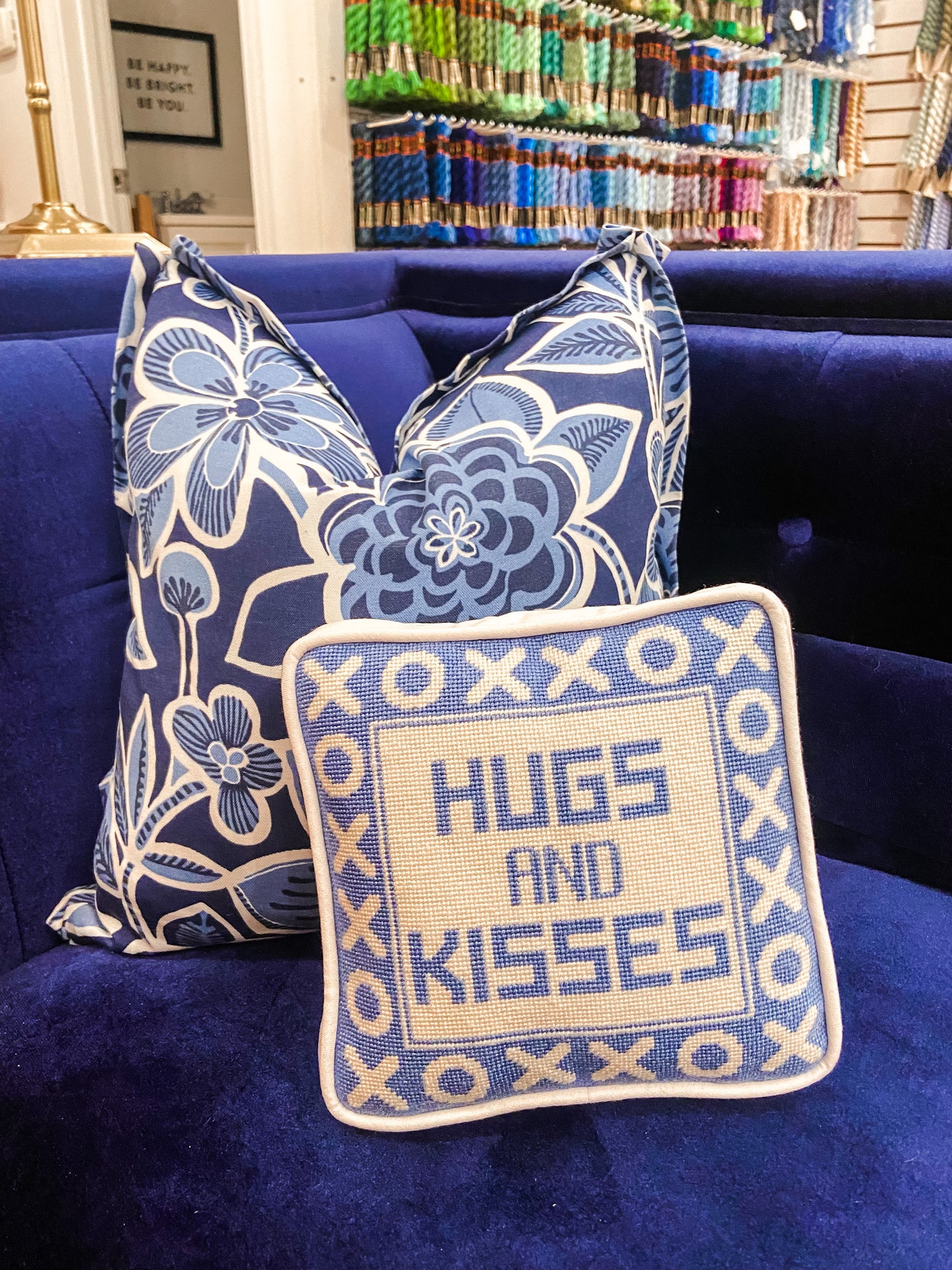
Trust us when we say, we never knew how many words could be used to describe a pillow! Therefore, we bring you our guide to decoding what your LNS is saying when you bring a canvas in for finishing. Not only do we want you to understand the terms, but we also hope this empowers you to ask for the finishing you really want and convey your vision accurately.
Pillow finishing:
We are going to highlight two basic pillow types. From these two types you have many options that you can add on to further customize, so think of the pillow type as your "base" to work off. First, a knife edge pillow. This is a pillow finished by sewing the canvas on the front and the fabric on the back of a pillow with a single seam (you could also have a double-sided knife edge pillow - instead of fabric on the back, you would have another needlepoint canvas!). The result looks like below. This is the most basic finish of a needlepoint pillow, and one you probably have seen in your own house!

The second "base" method you'll commonly see is a box pillow. With the box pillow, the front and the back of the pillow are sewn together using a third piece of fabric. This results in a flat panel around all four edges of the pillow that allows the pillow to stand up like a box. This ends up looking like the below photo:

Both a knife edge and a box pillow are beautiful finishes. Canvases finished as a box pillow will appear larger than knife edge pillows because they have more depth —for this reason smaller pillows appear a bit larger when finished as a box pillow. Very large canvases therefore also may look nicer finished with a knife edge. When it boils down to it, both are beautiful, and it is really personal preference. Typically, box finishing is slightly more expensive than knife edge due to the extra work entailed.
Pillow additions!
Welt: This is the most basic addition to be made to a pillow and we recommend for both knife and box pillows (unless another border/trim described below is selected). A welt is a small round piping surrounding the border of a pillow. On a knife edge pillow it will appear right where the front and back of a pillow meet. On a box pillow there will be two welts which appear where the front and back of the canvas meet the flat panel. Welts are most commonly done in the backing fabric of a pillow but can also be done in contrasting colors for an extra pop.

Cording: Cording is the same concept as a welt except that it is textured and “twisted” instead of being a basic piping. Finishers carry basic cords, but stitchers are also welcome to bring in specific cording for projects. Though the same as the same as the cording for an ornament, note that pillow cording is thicker and not constructed by the finisher.
Tassels: Again, tassels are the same concept as welts & cording but with you guessed it—tassels! On a box pillow a tassel can be added to the front seam of a pillow and a welt can be added to the back seam of the pillow. Keep in mind that tassels are less sturdy than both cording & welts so are best used on purely decorative pillows.
Ruffles: You guessed it, same idea as above but with a ruffle! Ruffles can be added in the same fabric as the pillow backing, or in a cording fabric. Ruffles add a beautiful feminine flair to pillows and also make the pillow appear larger. The width of a ruffle can also be customized.
Ruching: Ruching is a slightly different concept, which can be added to a box pillow. Essentially rouching is scrunching the fabric used on the panel of a box pillow to give a unique look to the side of the pillow. Many women's bathing suits, dresses, and tops have ruching on them, so this is the same concept. See the below picture to get a better idea!
Inset: Another pillow finishing vocab word is inset, which means that a canvas centered on the front of a pillow and surrounded by a border of fabric before the edge of the pillow. The size of the fabric border is customizable, and can be adjusted to change the size of the total pillow. Finishing a smaller canvas as an inset is a great way to make your pillow feel more substantial. See the photo below. An important note, is that as inset pillow take more skill to finish, they are more expensive than none inset pillows.

Zippers: Bet you knew this one 😊! Essentially, this is just the option to have a zipper on the back of a canvas so that the filling of a canvas can be removed. Some finishers do this by default while others are unable to do it at all, so be sure to specify!
There are thousands of ways to finish pillow, so these are just the basics but should help you understand the wonderful world of pillow finishing! What is your favorite way to finish a pillow? Let us know in the comments below!
* Hugs and Kisses Pillow stitched by V. Hunt, canvas available here.
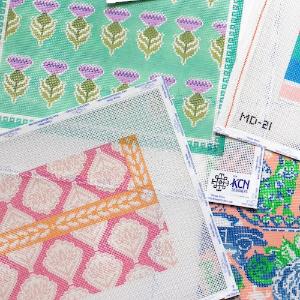
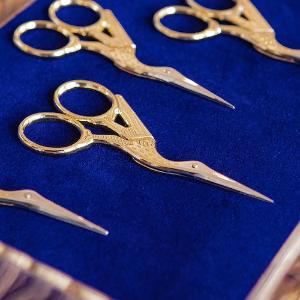
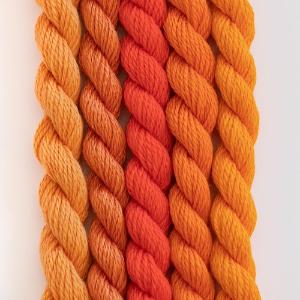
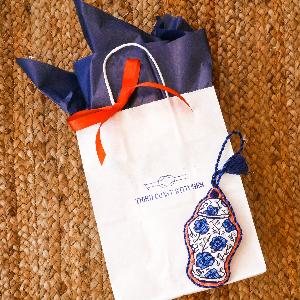
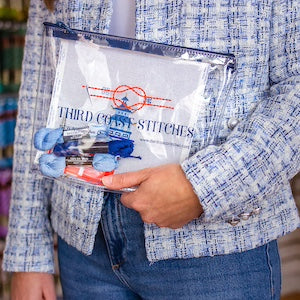
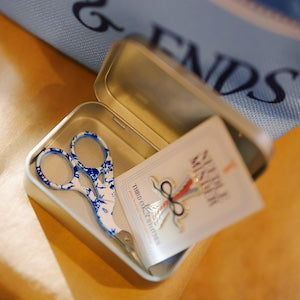
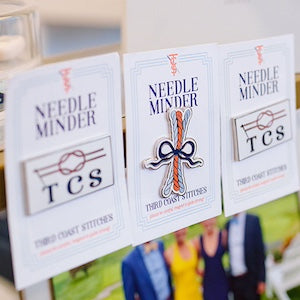
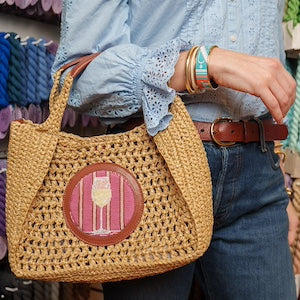
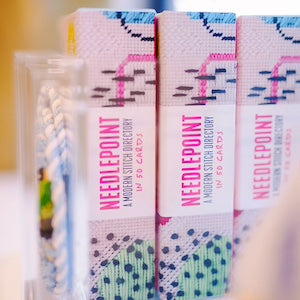
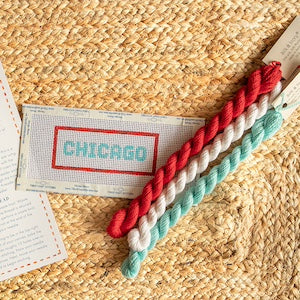

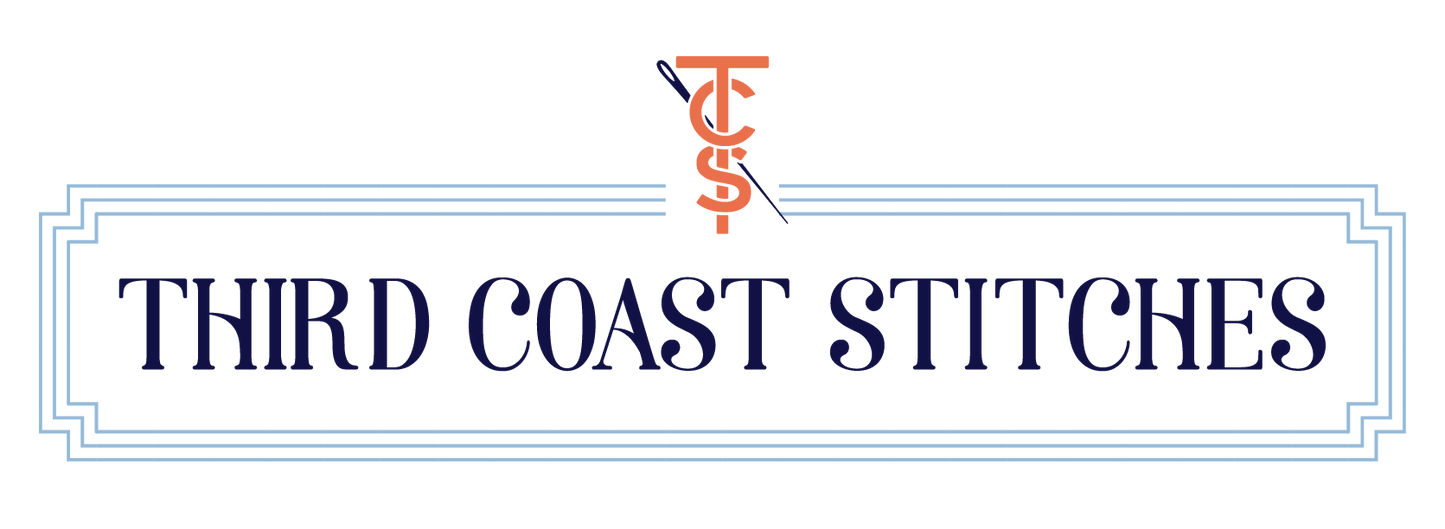
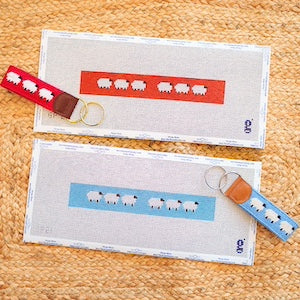
Thank you for sharing, useful information keep on sharing,
Thank you for sharing, useful information keep on sharing
Really informative post, very helpful for people looking to learn more about Pillows. Thanks for sharing the useful information about the Pillows.
Thank you! So helpful to understand!! And always great to have additional pictures of inspiration!